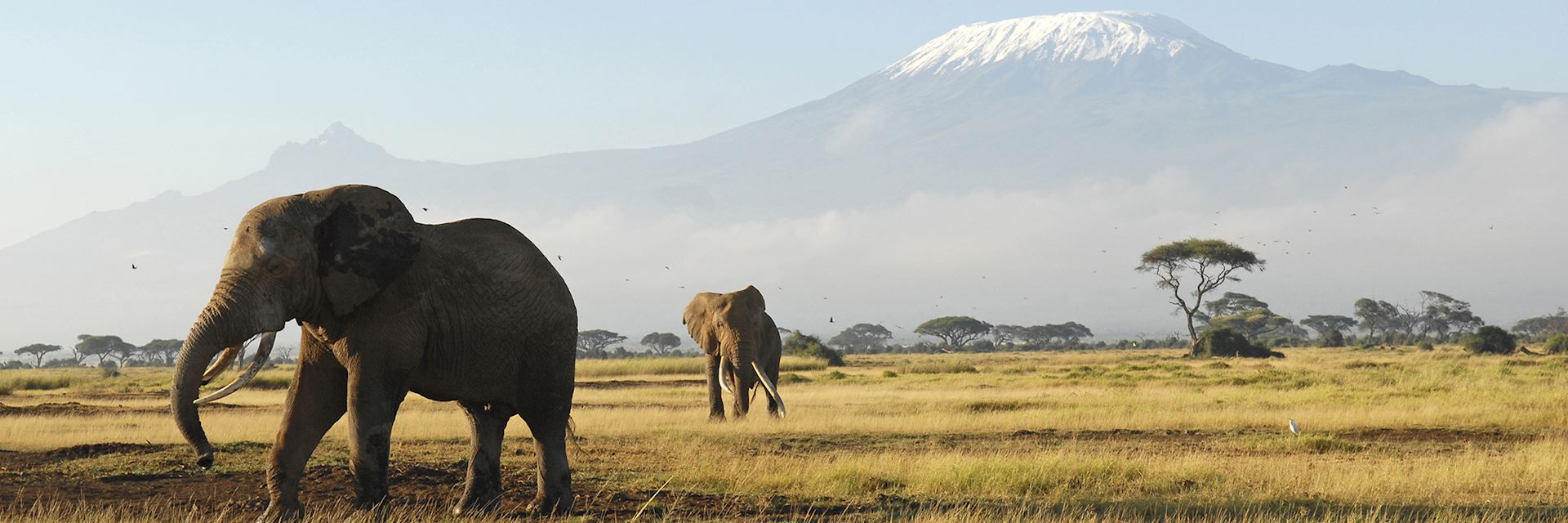No matter what your preferences, our team of specialists can plan your perfect Africa trip, whether you're looking for a family safari, wildlife-focused honeymoon or time on the beach combined with a wildlife experience.
Where to go for big cats
South Luangwa National Park, Zambia by Harriet
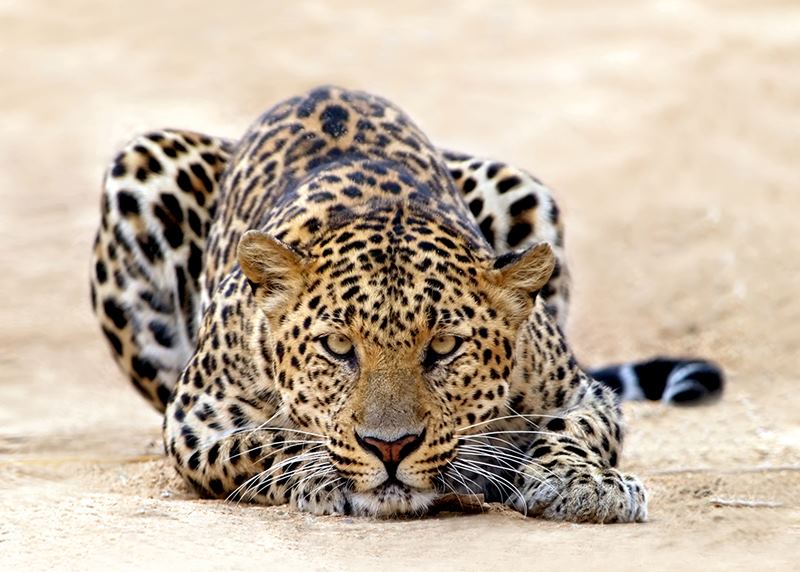
'Four leopard in one day — is that normal?' I asked my guide. It turned out you don’t always see that many of the elusive animals in one go, but sightings are regular in the South Luangwa National Park: it is a renowned location for viewing this elusive and majestic cat.
Aside from leopard, Zambia also boasts excellent lion sightings — and not just on the ground. In west Zambia, the Busanga Plains are home to several prides of lion that have learned to adapt to seasonal flooding by climbing trees.
Lion are my personal favourite on safari and I have been fortunate enough to view them a number of times here. I have fantastic memories of watching the pride interacting with each other, seeing the shifts in behaviour as they move into hunting mode, chomp down on buffalo or simply relax in the shade of a tree. I can now add seeing them climbing trees, which was an unusual and amusing sight.
The scenic plains are also home to cheetah and wild dog. A hot air balloon is a particularly spectacular way to view the area and search for big cats. There are few places in Africa to see wildlife from this perspective and it is a truly special experience.
Where to go for the school holidays
Okavango Delta, Botswana by Chloe
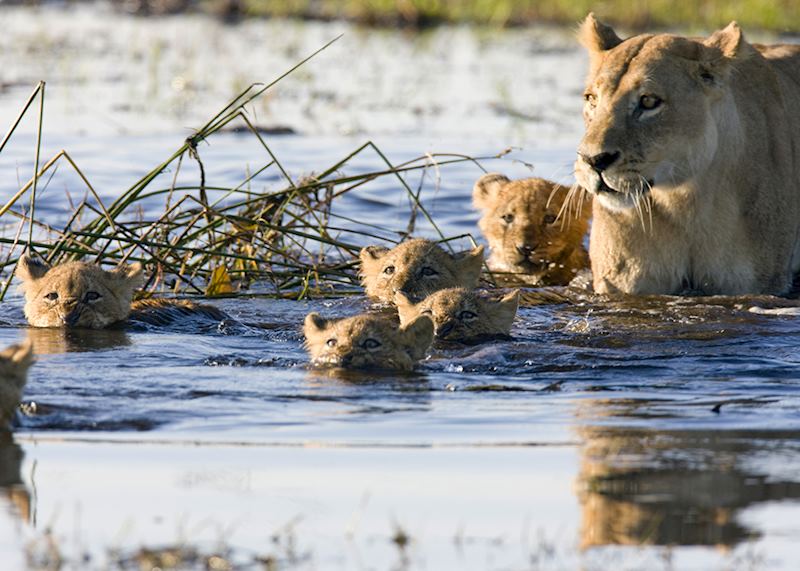
An African safari is always a memorable experience but never more so than if you are a child seeing the 'Big Five' (lion, leopard, Cape buffalo, rhino and elephant) for the first time. A variety of destinations cater for family safari trips but one of our favourites is Botswana, renowned for its game viewing and beautiful vistas.
The school summer holidays is prime time to visit the Okavango Delta: you can expect dry weather and the delta to be flooded, attracting a host of different animals. However, each season provides a fresh experience to savour.
Some of our favourite partners really know how to look after a family's junior members — the Young Explorers, based at Footsteps Camp, is an excellent programme designed for families in the Okavango Delta, with superb guides. From your private camp you’ll enjoy game drives and walks, learn how to track animals and discover more about the environment.
Children can try their hands at poling a mokoro (canoe), fishing, making a bow and arrow, lighting a fire and, of course, wildlife spotting. The whole adventure is both educational and fun, ensuring children have lots to keep them interested and entertained.
Where to go for a honeymoon
Eastern and Western Cape, South Africa by Anna

The Cape region of South Africa is an ideal honeymoon destination for couples who want to combine beach time with culture and a safari.
The Eastern Cape is a great location for adding on a few days’ safari and offers some of South Africa’s most luxurious lodges, such as Bayethe Lodge at Shamwari and Great Fish River Lodge at Kwandwe. In Cape Town, newlyweds can immerse themselves in South African life by exploring the eclectic mix of galleries, museums and historical sites that this city has to offer.
Over the summer months the popular suburbs of Camps Bay and Clifton offer a great beach escape. However, for couples seeking a more secluded beach experience, the west coast towns of Langebaan and Paternoster are merely an hour’s drive away.
For wine lovers, the picturesque town of Franschhoek, with its French heritage and world-renowned restaurants, is an idyllic location. Tucked in a valley, the town’s main road is lined with cafés and intimate guesthouses, and couples can enjoy the hillside vineyards that surround the town.
The best time to visit the Cape Region is between November and March, when days are long and sunny. We recommend a trip of 10 to 14 days in order to make the most of this diverse region.
Where to go for safari & beach
Nyerere National Park and Zanzibar, Tanzania by Mike
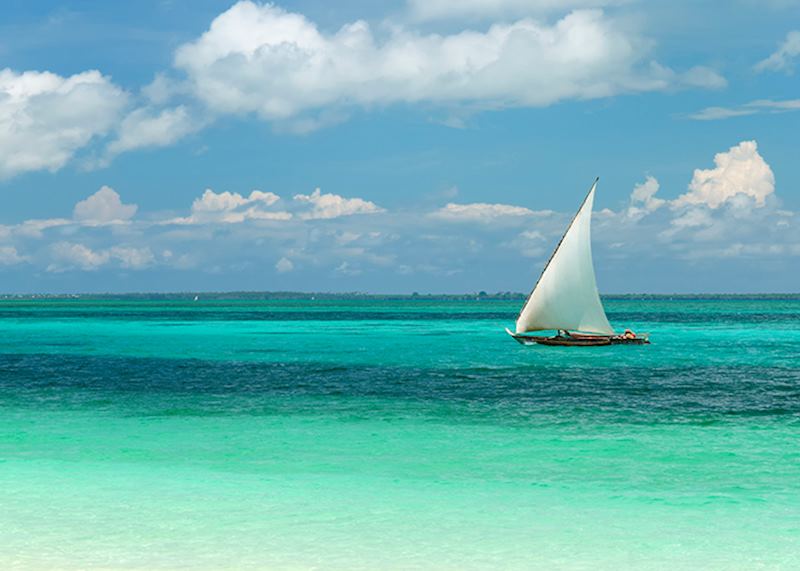
If you are looking for a quintessential safari and beach holiday, Tanzania and Zanzibar really should be right at the top of your list. The remote southern region of Tanzania, and in particular the Nyerere National Park, offers excellent value ‘one stop’ wildlife viewing within easy reach of Zanzibar’s palm-fringed beaches. It is one of my favourite locations.
Set among the waterways of the Rufiji River and covering some 50,000 square kilometres, the Nyerere National Park is one of the largest protected areas within Africa and feels far more remote than the short flight from Dar es Salaam suggests.
With only a handful of small camps operating within the park, it is still relatively hidden and a far cry from the busier safari destinations. The wildlife viewing is excellent too (the only big game you are unlikely to see are cheetah and rhino) and it has one of the largest populations of the incredibly rare wild dog anywhere in Africa, as well as some fantastic birdlife.
Offering the opportunity to enjoy game drives, bush walks and year-round boat safaris, Nyerere National Park really does have it all. With Zanzibar less than two hours away, it makes for a fantastic hassle-free combination that doesn’t have to blow the budget.
Where to go for great value
Etosha National Park, Namibia by Alex
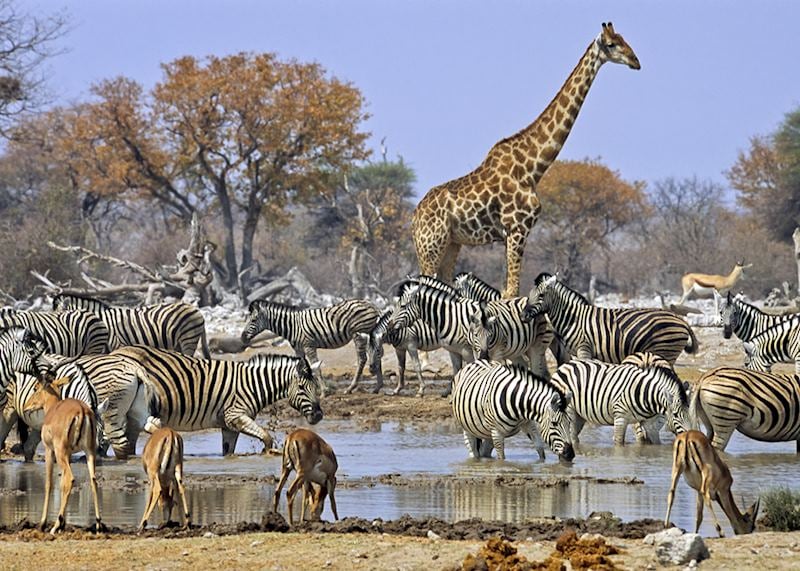
Many people think of the rolling plains of the Masai Mara or the game rich Kruger National Park when they think of safari destinations, but there is also another, less obvious destination that can fulfil all of your safari desires and at a great price too.
Namibia is home to the vast Etosha National Park, a large part of which is covered by a shimmering salt pan. The game viewing is superb with elephant, lion, giraffe and cheetah among the wildlife spotted through the heat haze. The dry season is when you find the animals congregating around the waterholes and is the best time to visit, but if you can tolerate the heat and are prepared to risk a bit of rain, the end of the year is very rewarding too, with fantastic game viewing and the added benefit of low-season rates.
Staying in the comfortable government-owned camps and self-driving in the park is also great value. The freedom to explore under your own steam is refreshing, and one of my favourite memories is being the only car around while we watched a black rhino come to quench its thirst. The added factor of an exchange rate in our favour means that Namibia combines brilliant game viewing and great value in one.
Where to go for something unique
Masai Mara Conservancies, Kenya by Mark

The Masai Mara National Reserve’s reputation as one of Africa’s prime safari locations is certainly well deserved. Famed for dramatic images of wildebeest plunging across its crocodile-infested waterways, the Mara has earned its place in any wildlife enthusiast’s consciousness. However, due to its popularity, in recent years the Kenyan park has also become one of the busier areas for game watching. Nevertheless, there are still plenty of opportunities to get off the beaten track and away from the crowds if you know where to look.
Around the edge of the main national park, vast swathes of land have been set aside for a select number of camps to be used as exclusive conservancies. They have strict access rights and curbs on visitor numbers. As a result of this, these areas not only significantly extend the protected wildlife area of the Mara ecosystem but also put money back into the local economy as the land is owned in conjunction with the local communities. A conservancy safari in the Mara offers the safari goer an unparalleled opportunity to enjoy a range of activities such as walking safaris, off-road game driving, fly camping and night game drives — these activities are restricted within the park itself, and allow you to get away from the crowds.
One of our favourite itineraries offers the chance to walk between two camps and head out on foot for a night of fly camping in the heart of the bush, with an expert guide explaining the nuances of the savannah, from the wonderful birdlife to the paw prints in the dirt.
- View our 'Ultimate Kenya safari: Amboseli, Meru & Masai Mara' trip idea
Where to go for a gorilla tracking adventure
Bwindi Impenetrable Forest, Uganda by James
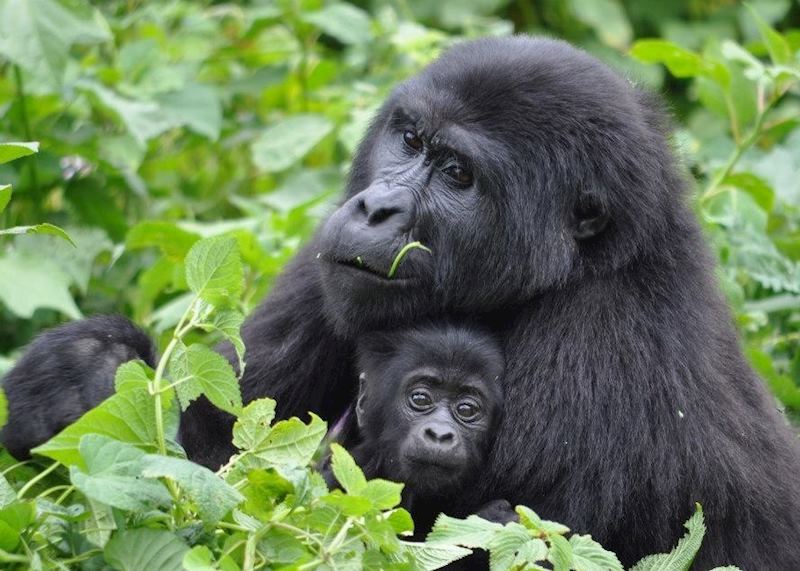
Uganda is the perfect country to visit if you're interested in animals and enjoy variety on your travels. The traditional circuit in the west of Uganda starts with a flight to Entebbe, on the banks of Lake Victoria. Next, head west to the Kibale National Park to see chimpanzees. The 95% sighting success rate and the flat topography mean you have an excellent chance to get very close to our distant cousins.
Continue to journey south through Queen Elizabeth National Park, a stunning area for a traditional safari and home to Uganda's famed tree-climbing lion. The final stop on the classic itinerary will be, for many, the absolute highlight of the trip: trekking to see the mountain gorillas in Bwindi Impenetrable Forest. To sit with these gentle giants is a humbling experience that will live with you forever.
In the months of September and October new bamboo shoots start to grow, which are the gorilla equivalent of chocolate. This is an excellent time to visit as their favourite snack makes them very active and excited. Watching them play together is heart-warming and breathtaking — a memorable end to an unforgettable adventure.
Safari like the experts
- Have your own binoculars. Animals don't pose on demand, and nobody likes sharing when that elusive leopard finally shows up.
- Don't spend all of your time behind the camera. Sometimes it's good to appreciate the wildness of the surroundings without the constant chiming and whirring.
- You can spend a lot on dedicated safari clothing but it's not strictly necessary. If you have clothing that's not blue or black (to avoid attracting tsetse flies) or bright (to avoid startling game) then you'll be fine.
- Bring warm clothes. Activities in the bush invariably include a dawn or pre-dawn start and many places can be pretty chilly at this time of the morning.
Was this useful?


